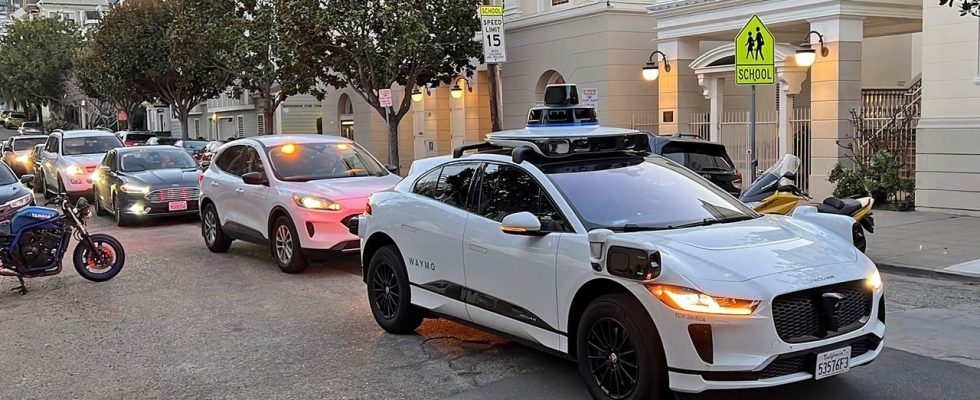In San Francisco, robotic taxis have been approved for normal road traffic for the first time. In the future, Waymo and Cruise taxis will be able to drive guests throughout the city without a driver – despite concerns.
San Francisco is becoming a test field for robotaxi services: the companies Waymo and Cruise have received general permission to transport paying passengers around the clock throughout the city without a security driver. With its decision on Friday night, the Californian regulatory authority CPUC overrode the resistance of the municipal transport company and some residents. The CPUC will probably schedule a hearing for the fall in which an initial interim assessment will be made.
Waymo is a sister company of Google, Cruise is owned by car giant General Motors. Both companies have been testing self-driving cars in San Francisco for years. Currently, their vehicles are already driving in exceptional cases without a human being at the wheel. In this case, only Cruise was allowed to take money from passengers – and only at night. Waymo cars used to have to have a safety driver on board for commercial trips.
Perfect test field for training
The CPUC’s decision opens the door to the commercial use of novel robotaxis without steering wheels and pedals. Currently, Cruise and Waymo are using electric vehicles that have been converted into self-driving cars. However, both companies are already working on cars in which only seats are provided for passengers and no longer for a safety driver.
San Francisco is the perfect training route for further training in autonomous driving: “If we can drive self-driving cars in a city like San Francisco with its fog, hills and traffic – they will work just about anywhere,” emphasized Cruise boss Kyle Vogt recently. Cruise is already expanding to other US cities.
working business model?
With the CPUC’s extended permission for Waymo and Cruise, after investing billions, it can now be tried out on a large scale for the first time to see how well a business model with self-driving cars works. Because the vehicles are extremely expensive – they must therefore be used to capacity as permanently as possible and earn money in order to be profitable at all. Cruise boss Vogt recently admitted that San Francisco has more than 10,000 people who offer driving services. “Of course, these drivers don’t work 20 hours a day like a robotaxi can,” he said. Vogt sees room for several thousand autonomous taxis in large cities.
Critics say the driverless cars sometimes blocked the roads after software bugs, disrupting traffic and the work of emergency services. Eyewitness videos of Cruise cars jamming up at intersections are doing the rounds on the internet. Proponents see an advantage in the higher level of safety, since unlike people, computers cannot be distracted at the wheel.
Mobileye wants to bring robotaxis to Germany
In addition to Waymo and Cruise, companies like Amazon are already working on cars for autonomous driving. Zoox, which belongs to Amazon, also wants to get its vehicles on the road as quickly as possible. Robotaxis will soon be on the road in Germany too: Mobileye, a company belonging to the chip giant Intel, wants to set up a robotaxis service in Germany.
At the same time, the euphoria surrounding autonomous driving has subsided in recent years, and some companies have already given up on their projects, mainly because of the high financial outlay. The driving service broker Uber sold its robot car division.

